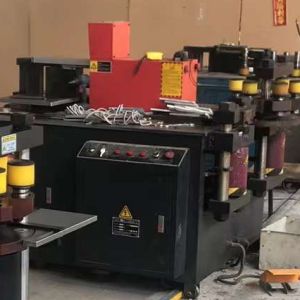What is the bus duct? Function of bus duct!Posted by bruce zhu on October 25th, 2022 What is the bus duct? Function of bus duct! Siemens bus duct is a closed metal device composed of copper and aluminum bus bars, which is used to distribute large power to various components of the distributed system. It has increasingly replaced wires and cables in the indoor low-voltage power transmission trunk project. Compared with the traditional cable, it fully reflects its advantages during the large current transmission. At the same time, due to the adoption of new technology and new process, the contact resistance and temperature rise at the connection points at both ends of the busbar bending machine and at the branch socket are greatly reduced, and high-quality insulating materials are used in the bus duct, which improves the safety and reliability of the bus duct and makes the whole system more perfect. a) The sectional area Z of the current carrying low-voltage cable is 1000mm2, and the rated current is 1600A. Due to its large volume and weight, such a large specification cable is rarely used in practical projects. Busbar machine Cables of 400mm2 and below are commonly used in the project, which requires multiple cables to realize simultaneous power supply. The rated current Z of bus duct can reach 6300A, and its powerful current carrying capacity is incomparable to that of cables. b) Overload capacity Whether cable or Siemens bus duct, the overload capacity depends on the operating temperature of the insulating material used. The working temperature of bus bar machine duct insulation material is 105 ℃. Radiation cross-linked flame retardant winding tape (PER) and radiation cross-linked polyolefin heat shrinkable pipe with working temperature above 140 ℃ have been developed. At present, the normal working temperature of insulating materials used in cables is generally 90 ℃ and 105 ℃, and the high working temperature of Z of irradiated cross-linked cables is 125 ℃. Therefore, the overload capacity of bus duct is far greater than that of cable. c) The plug-in installation tapping method is generally adopted for the installation tapping of Siemens bus duct. The so-called plug type means that the power supply of the trunk line is distributed to the branch line by using the plug mode, and a plug box is reserved every few meters, so the tap is very convenient. However, the cables need to be tapped on site, which is of poor reliability. Even prefabricated branch cables have their defects. The obvious disadvantage of the branch cable is that the branch connection equipment needs to be customized from the factory, and the open "C" type hoop is usually used. Like it? Share it!More by this author |


